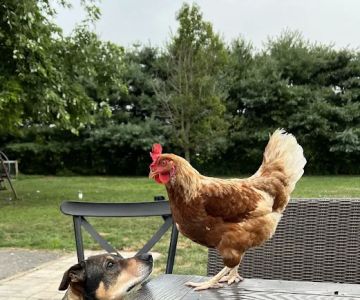Maintaining Healthy Paws: Why Nail Trimming Is Crucial for Your Pet's Well-being
As pet owners, we always want to ensure that our furry companions are happy, healthy, and comfortable. One often overlooked aspect of pet care is the maintenance of their paws, especially when it comes to nail trimming. Regular nail care not only contributes to your pet's overall health, but it also plays a critical role in preventing a wide range of problems, from discomfort to serious injuries. I learned this the hard way with my own dog, Max, whose nails grew too long, leading to complications that could have been avoided with a simple trim.
The Importance of Nail Trimming for Pets
Every pet, whether a dog, cat, or other small animals, relies on their paws for everyday activities like walking, running, and climbing. However, as pets grow and become more active, their nails also grow. Over time, untrimmed nails can cause pain, infections, and difficulty walking. In extreme cases, nails that are too long can even curl into the paw pads, creating a host of painful and dangerous conditions.
Regular trimming helps keep your pet’s paws in good shape, ensuring that they remain comfortable while avoiding the risk of nail-related issues. Not only does it prevent physical harm, but it also improves your pet's mobility, allowing them to play and exercise without hindrance. Furthermore, nail trimming also contributes to maintaining a clean and hygienic environment. When nails are too long, they can collect dirt and debris, leading to infections or discomfort for your pet.
How Long Should Pet Nails Be? The Ideal Length
It's essential to know when it's time to trim your pet’s nails. Generally, a dog's nails should be short enough that they do not touch the ground when walking. If your pet’s nails click on the floor or seem to get caught in carpets, that’s a clear sign they are too long. For cats, their claws should be trimmed regularly to prevent them from becoming too sharp or overgrown, especially if they are indoor pets.
It's crucial to avoid cutting the quick, the sensitive area inside the nail that contains blood vessels and nerves. If you accidentally cut into the quick, it can cause bleeding and pain for your pet. This is why it is highly recommended to take your pet to a professional groomer or veterinarian if you are unsure about how to safely trim their nails.
Signs That Your Pet Needs a Nail Trim
There are several clear signs that your pet’s nails are getting too long and need attention:
- Clicking sound: When your pet walks, you may hear a clicking sound as their nails hit the floor. This is an obvious indicator that their nails are too long.
- Visible discomfort: If your pet seems reluctant to walk, or if you notice them limping or favoring one paw, it could be due to their nails becoming uncomfortable.
- Overgrown nails: If you see that your pet’s nails have curved into the paw pads, it's a sign that they are seriously overgrown and need immediate trimming.
- Infection: Overgrown nails can lead to infections. If you notice redness, swelling, or discharge around your pet’s nails, they may need medical attention in addition to a trim.
Tips for Safe Nail Trimming at Home
If you decide to trim your pet’s nails yourself, it's important to approach the task with care. Here are some tips to ensure a safe and effective trim:
- Use the right tools: Invest in a good-quality pet nail trimmer or grinder. There are different types available, such as scissor-style, guillotine-style, and rotary grinders, so choose the one that works best for your pet.
- Trim little by little: Always trim a small amount at a time, especially if your pet’s nails are dark, as you won’t be able to see the quick. Cut gradually to avoid cutting into the sensitive area.
- Stay calm: It’s normal for pets to feel anxious during nail trims, so it’s important to stay calm and reassure them throughout the process. Using treats or praise can help them associate nail trimming with positive experiences.
- Use styptic powder: In case of accidental bleeding, keep styptic powder or cornstarch on hand to stop the bleeding quickly. This will give you peace of mind should you make a mistake.
When to Seek Professional Help
If your pet’s nails are extremely long, or if you feel uncomfortable trimming them yourself, it’s a good idea to take them to a professional groomer or veterinarian. These professionals have the expertise and proper tools to safely trim your pet’s nails. Additionally, if your pet has a medical condition, such as arthritis or diabetes, that affects their paws, a vet can provide specialized care and guidance.
Conclusion: Keeping Your Pet’s Paws Healthy
Maintaining healthy paws through regular nail trimming is essential for your pet’s overall well-being. Not only does it prevent discomfort and injury, but it also ensures that your pet can live an active and healthy life. Whether you choose to trim your pet’s nails yourself or seek professional help, keeping those nails in check will contribute to their health and happiness.
By taking a proactive approach to paw care, you can avoid the complications I faced with Max, ensuring that your pet's paws remain pain-free and healthy for years to come.
If you're looking for professional pet care or grooming services, consider visiting Hidden Brook Veterinary for expert advice and assistance.











